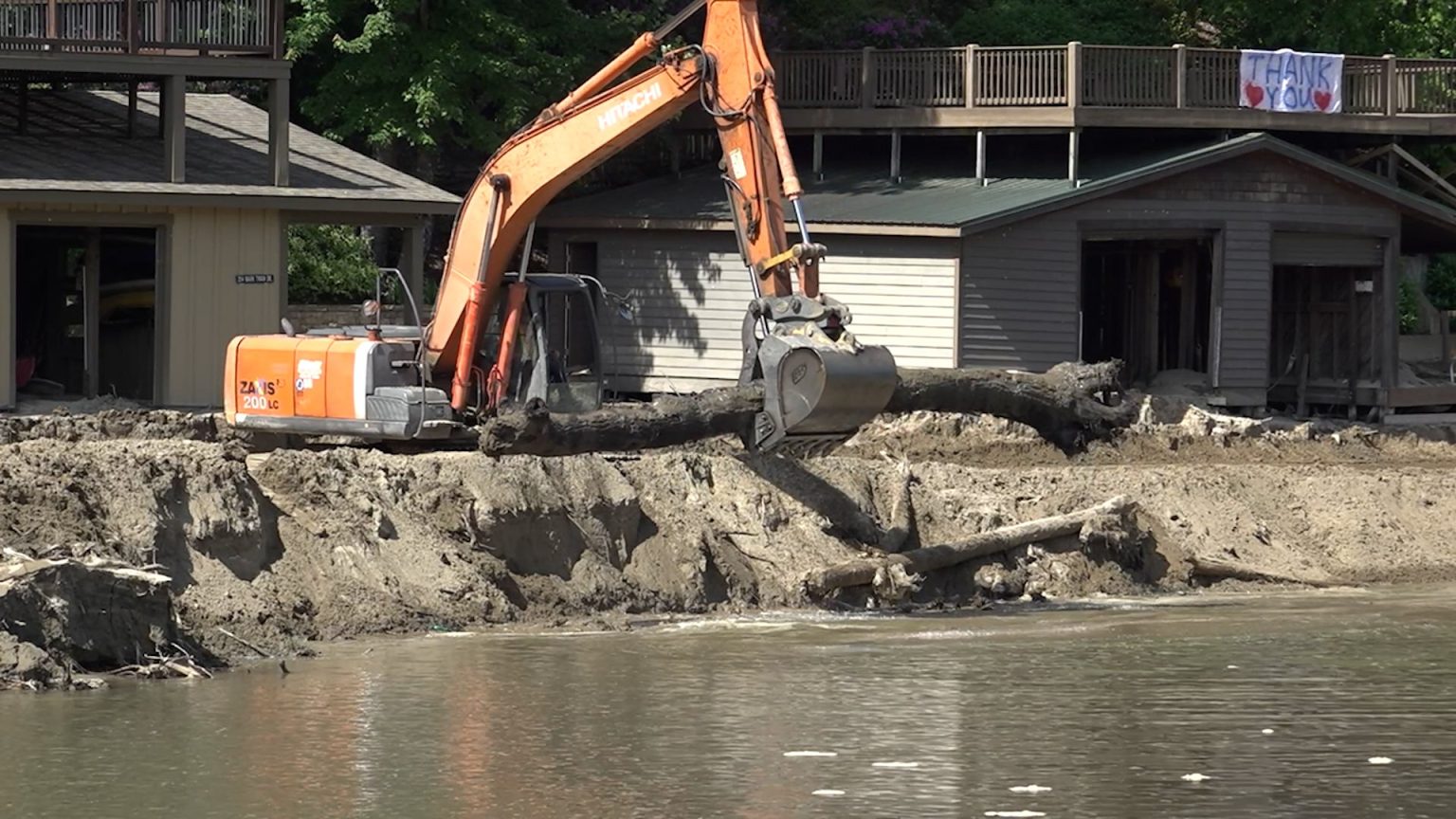In September, Hurricane Helene wreaked havoc across the South, causing extensive flooding and destruction. Seven months later, the U.S. Army Corps of Engineers (USACE) has made significant strides in debris removal in western North Carolina, particularly in towns like Lake Lure. Their efforts have cleared over five million cubic yards of debris, though challenges remain as the region aims to recover in time for the upcoming tourist season.
| Article Subheadings |
|---|
| 1) Overview of Hurricane Helene’s Impact |
| 2) The Role of the U.S. Army Corps of Engineers |
| 3) Local Communities and Their Struggles |
| 4) Future Recovery Efforts |
| 5) Community Resilience and Preparedness |
Overview of Hurricane Helene’s Impact
Hurricane Helene made landfall in September 2023, causing widespread destruction across several southern states, with North Carolina being one of the hardest-hit regions. The storm brought record-level rainfall and triggered severe flooding, displacing numerous residents and damaging infrastructure. In Lake Lure, a town normally bustling with tourists, businesses saw significant losses as floodwaters overwhelmed the area. Reports indicated that the storm’s devastation resulted in millions of dollars in damages, impacting local economies reliant on tourism.
The Role of the U.S. Army Corps of Engineers
The U.S. Army Corps of Engineers has been instrumental in the ongoing recovery efforts following Hurricane Helene. Since the storm hit, USACE has mobilized teams to lead debris removal operations across western North Carolina. According to USACE officials, the removal of five million cubic yards of debris has been a critical milestone in restoration efforts.
“At least 75% of the storm-generated debris from Hurricane Helene had found its way into some type of waterway,”
stated USACE Col. Brad Morgan. Special operations equipment has been essential in effectively clearing water channels and roadways, with USACE teams working diligently to restore safety and accessibility in affected areas.
Local Communities and Their Struggles
The town of Lake Lure has faced immense challenges in the aftermath of Hurricane Helene. As the recovery efforts continue, local officials like Mayor Carol Pritchett have emphasized the importance of the USACE’s timely intervention.
“We would not be where we are today, truthfully, without them,”
Pritchett remarked, highlighting the pivotal support provided by the Corps. The ongoing cleanup has been marked by the community’s struggle to adapt, with a waterpark in Lake Lure remaining closed due to the disrupted water supply. As preparations for the summer tourist season intensify, the necessity of swift debris removal and rehabilitation of public amenities has become a pressing concern.
Future Recovery Efforts
Looking ahead, the focus on recovery efforts intensifies as local leaders work towards fully restoring their communities. USACE has set an ambitious goal to clear all remaining debris by July 2024, a timeline they believe is achievable given their current progress. Col. Morgan highlighted that the cleanup effort parallels large-scale urban responses, noting,
“We probably have 7,000 private property parcels that we’ll clean up. L.A. has about 9,000.”
This comparison underscores the extensive scale of damage faced by smaller communities like Lake Lure, which are grappling with the realities of recovery that often parallel those in larger urban centers.
Community Resilience and Preparedness
The aftermath of Hurricane Helene has offered important lessons on disaster preparedness and community resilience. Mayor Pritchett acknowledged that while Lake Lure had an emergency management plan, the ferocity of Hurricane Helene exceeded their expectations.
“This was just not that hurricane,”
she shared, emphasizing the need for ongoing adaptations to their emergency protocols. As recovery progresses, local officials and residents are exploring ways to enhance resilience and ensure that they are better prepared for potential future disasters, aiming to foster a community spirit that can withstand external challenges.
| No. | Key Points |
|---|---|
| 1 | Hurricane Helene caused extensive destruction in North Carolina, displacing many residents. |
| 2 | USACE has removed over five million cubic yards of debris following the storm. |
| 3 | Local communities like Lake Lure are facing significant challenges in recovery efforts. |
| 4 | The goal is to clear all debris by July, with a continuous focus on safety and accessibility. |
| 5 | Community resilience and emergency preparedness are vital aspects being re-evaluated post-disaster. |
Summary
The ongoing recovery from Hurricane Helene highlights the resilience of affected communities and the critical role of the U.S. Army Corps of Engineers in facilitating cleanup efforts. As North Carolina pushes towards full recovery, the collaboration between local governments, state officials, and federal agencies showcases a united front in overcoming the physical and economic impacts of the disaster. Continued focus on preparedness and resilience will ensure that these communities can withstand future challenges and better support their residents.
Frequently Asked Questions
Question: What was the impact of Hurricane Helene on North Carolina?
Hurricane Helene caused severe flooding and extensive destruction across North Carolina, leading to significant displacement of residents and damage to infrastructure.
Question: How much debris has the U.S. Army Corps of Engineers removed?
The U.S. Army Corps of Engineers has removed over five million cubic yards of debris in their cleanup efforts in western North Carolina since the hurricane.
Question: What measures are being taken to prepare for future storms?
Local officials are reevaluating emergency management plans to improve community resilience and preparedness for potential future disasters following the lessons learned from Hurricane Helene.


